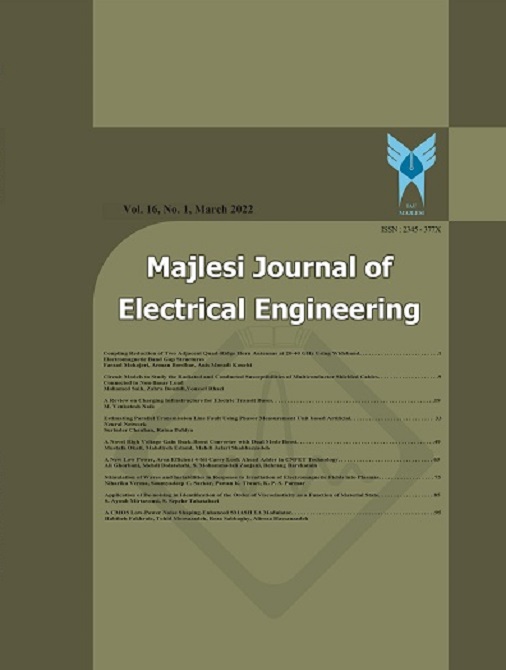[1] Gu, D.W., Petkov, P.H., Konstantinov, M.M. (2005). “Robust Control Design with MATLAB”. Springer-Verlag, London.
[2] Alfaro-Cid, E., McGookin, E.W., & Murray-Smith, D.J. (2008). “Optimisation of the weighting functions of an H controller using genetic algorithms and structured genetic algorithms”. International Journal of Systems Science, 39(4), 335–347.
[3] Thanh, B.T., & Parnichkun, M. (2008). “Balancing control of bicyrobo by PSO-based structure-specified mixed H2/H∞ control”. International Journal of Advanced Robotic Systems, 5(4), 395-402.
[4] Nuemann, D. and Araujo, H.X. (2005). “Hybrid differential evolution method for the mixed H2/H∞ robust control problem under pole assignment”. Proceedings of the 44th IEEE Conference on Decision and Control, and the European Control Conference. 1319-1324.
[5] Smirnov, A., & Jastrzebski, R.P. (2009). “Differential evolution approach for tuning an H∞ controller in AMB systems”. Proceedings of IEEE Annual Conference of Industrial Electronics, 1514 – 1518.
[6] Ly, U.L. (1990).“Robust control design using nonlinear constrained optimization. Benchmark problems for robust control design”. Proceedingsof American Control Conference, pp. 968-969.
[7] Rotstein, H and Sideris, A. (1991). “Constrained H∞ optimization: A design example”. Proceedings of the 30th Conference on Decision and Control.
[8] Byrns, E.V and Calise, A.J. (1992). “A loop transfer recovery approach to H∞ design for the coupled mass benchmark problem”.Journal of Guidance, Control, and Dynamics. vol. 15, no. 5, pp. 1118-1124
[9] Wie, B and Berstein, D.S. (1990). “Benchmark problems for robust control design”.Proceedings of American Control Conference, pp. 961-962.
[10] Petersen, I.R., Ugrinovskii, V.A and Savkin, A.V. (2000). “Robust control design using H∞ method”. Springer-Verlag, London. pp.151-155.
[11] Hinrichsen, D and Pritchard, A.J. (1986). “Stability radii of linear systems”. Systems & Control Letters, 7:1–10.
[12] Akmeliawati, R., and Tan, C. P. (2005). “Feedback controller and observer design to maximize stability radius”. Proceedings of the International Conference on Industrial Technology, pp. 660-664.
[13] Yousefi, H., Handroos, H., Soleymani, A. (2008). “Application of differential evolution in system identification of a servo-hydraulic system with a flexible load”, Mechatronics 18 : 513–528
[14] R. Storn and K. Price. (1995). “Differential evolution-a simple and efficient adaptive scheme for global optimization over continuous spaces. Technical Report”, International Computer Science Institute, Berkley.
[15] K. V. Price.D. Corne, M. Dorigo, and F. Glover, Eds. (1999). “An introduction to differential evolution, in New Ideas in Optimization”, London: McGraw-Hill, pp. 79–108.
[16] Mezura-Montes, E., Reyes, J.V., and Coello-Coello, C.A. (2006). “A comparative study of differential evolution variants for global optimization”. Proceedings of the 8th Annual Conference on Genetic and Evolutionary Computation, pp. 485-492
[17] Davendra, D. and Onwubolu, G. (2009).“Differential Evolution: A Handbook for Global Permutation-Based Combinatorial Optimization”. Studies in Computational Intelligence,Volume 175. Springer-Verlag Heidelberg.
[18] Coello Coello, C.A. (2002). “Theoretical and numerical constraint-handling techniques used with evolutionary algorithms: A survey of the state of the art”. Computer Methods in Applied Mechanics and Engineering, vol. 191, no. 11-12, pp. 1245–1287.
[19] Solihin, M.I, Wahyudi, Legowo, A and Akmeliawati, R. (2009). “Self-erecting inverted pendulum employing PSO for stabilizing and tracking controller”. Proceedingsof 5th International Colloquium on Signal Processing & Its Applications, pp.63-68.
[20] Lu, H. and Chen, W. (2006). “Dynamic-objective particle swarm optimization for constrained optimization problems”. Journal of Global Optimization, 12:409-419.
[21] Zielinski, K. and Laur, R. (2007). “Stopping criteria for a constrained single-objective particle swarm optimization”. Informatica 31: 51–59.

